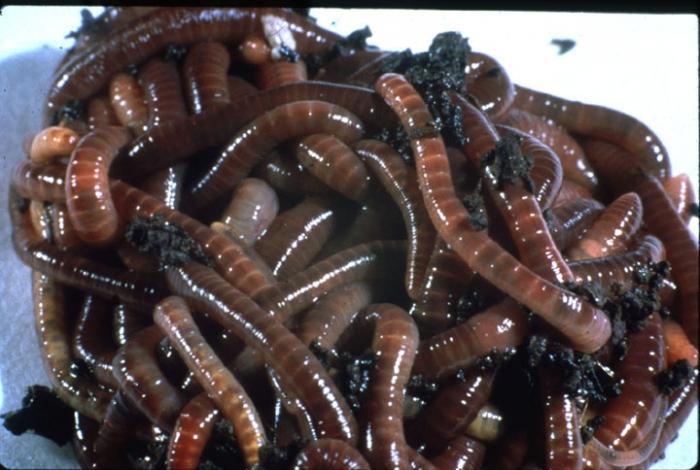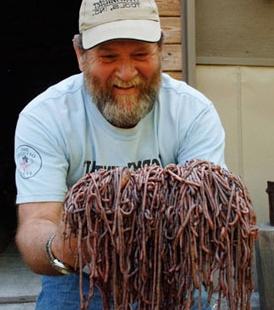Even people far from agriculture are aware that the so-called earthworms are found in the soil . In fact, there are many varieties of these creatures in the world, and in some countries worm breeding is a very profitable business.
What is such demand for them based on? Not only amateur fishermen are interested in a large number of their traditional bait in the land, but also gardeners who grow a wide variety of agricultural and ornamental crops. Even ancient farmers noticed that a large number of such underground inhabitants positively affect plants. Worm breeding in ancient Greece and Egypt was based on the opinion of famous scientists of that time. So, for example, Aristotle gave them the name "intestines of the earth."

Already modern researchers have experimentally convinced that worms process the remains of plants and the earth, thereby significantly enriching the soil with nutrients. Already at the end of the 50s of the twentieth century in farms with an intensive form of agriculture, farmers began breeding worms specifically for their farms. Then the scientific concept of “vermiculture” first appeared, denoting the breeding of these living creatures on a large scale. At the same time, a worm called California was bred, thanks to which vermiculture spread throughout the world. This is a new breed that was obtained at the University of California by hybridizing various species of earthworm. Intensively red color distinguishes it from less painted counterparts.

Breeding worms allows you to get large masses of vermicompost, which is a product of the allocation of their digestive system. It has a number of useful substances. It contains a huge number of different microorganisms, most of which are nitrogen fixers and actinomycetes, which contribute to the active growth of plants. In vermicompost pathogenic microorganisms are practically absent. In this substance, the concentration of magnesium and calcium increases by 2, potassium - by 10, phosphorus - by 7 times. Due to the content of so-called bio-stimulants in biohumus, it has a strong stimulating effect on the plant and its productivity.
California breed allows worm breeding at home and on an industrial scale. The habitats of these creatures are substrates saturated with organic matter (composts, manure, organic garbage and waste). California worms are not bred in the soil. They are real long-livers (live up to 16 years), while each individual lays about 20 cocoons in one season. Their gluttony is extreme. During the day, the worm eats the substrate 2 times its weight.

They feel great in relatively small wooden crates, almost without spilling out of them, which makes breeding worms at home quite a simple process. First you need to stock up in deep containers with a continuous bottom, on which dry sand is poured. Next, low wooden boxes with small holes are placed in the container. They are filled with special substrates or a mixture of manure, organic waste and soil. Worm breeding begins with the “settling” of the container. They are laid out on the surface of the moistened substrate, and the container is covered with polyethylene.
After the worms process the substrate, put 2 on 1 box and then 3. After processing the substrate in 2 boxes, the worms crawl into 3, and the first two boxes with the biohumus formed are freed. By constantly changing boxes, you can get a fairly large amount of high-quality fertilizer, which is used for its intended purpose. Wet sand from the bottom of the container is changed to dry and used as a useful additive to the soil. In winter, California worms are kept in warm basements.
The cultivation of ordinary earthworms can be done in compost pits, in which organic waste, grass, leaves are regularly added. Recycled vermicompost along with worms is poured into the garden in rainy weather. Such worms also enrich the soil with oxygen.